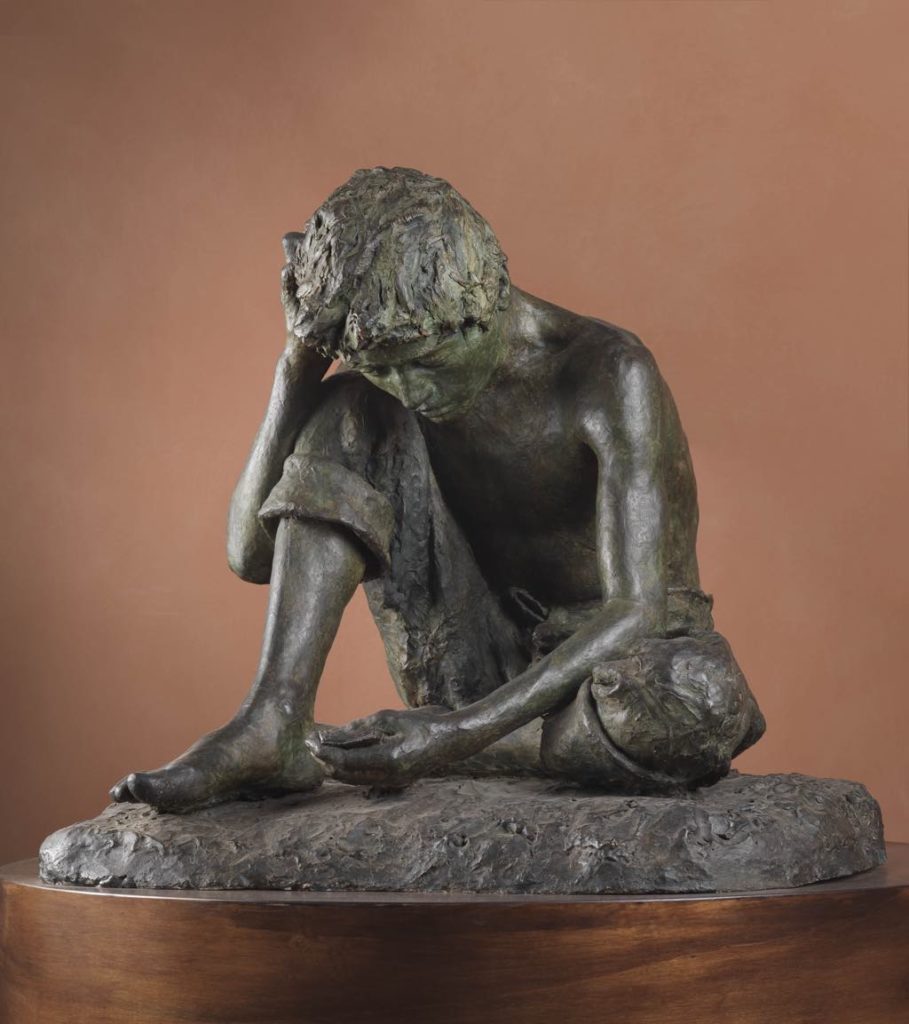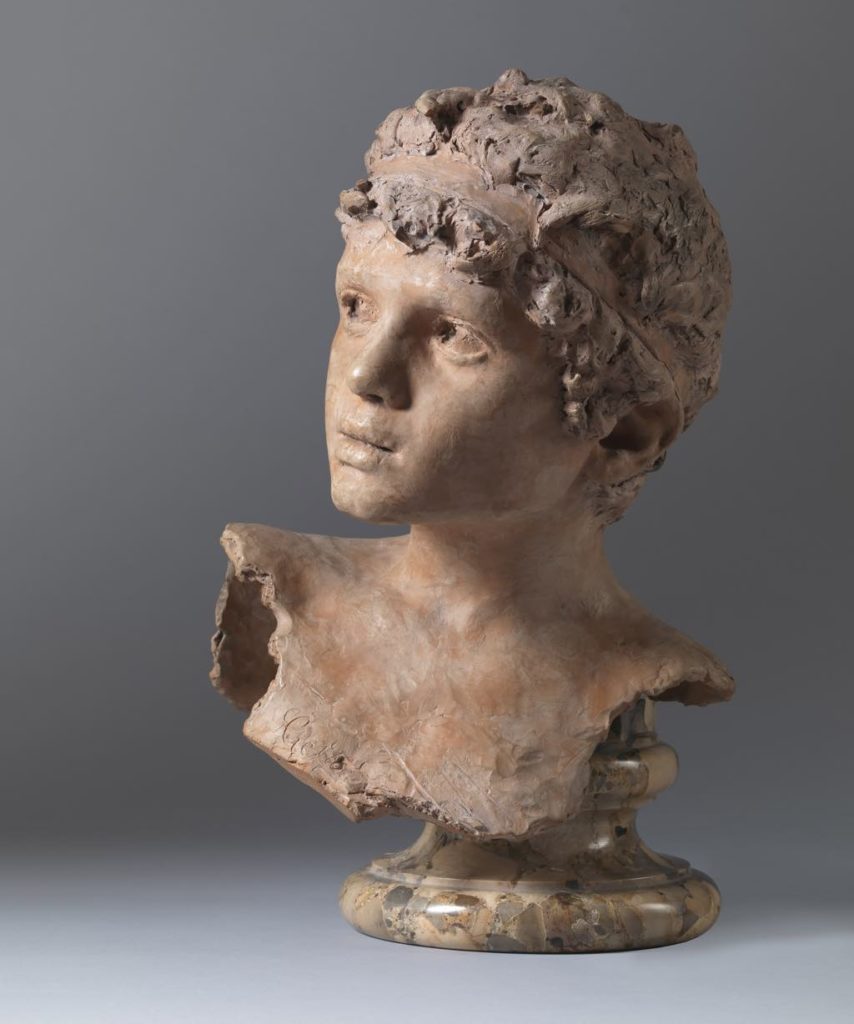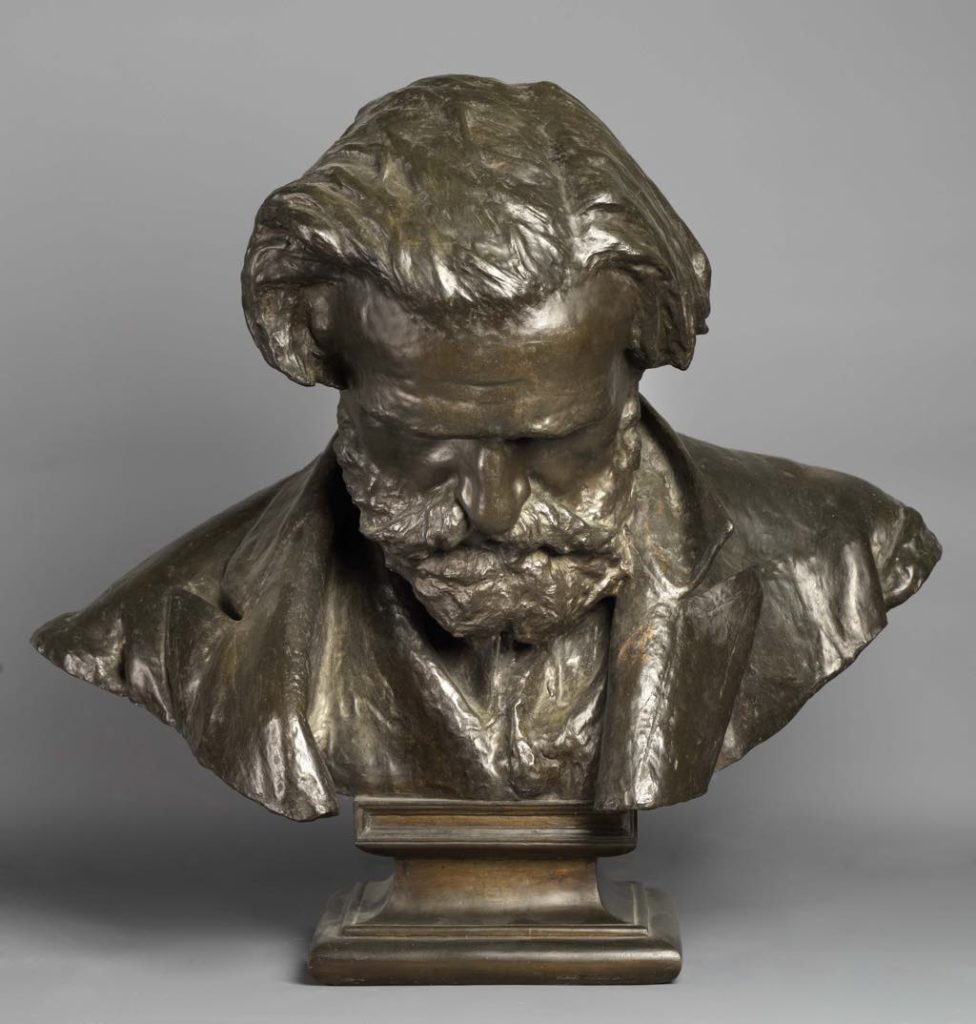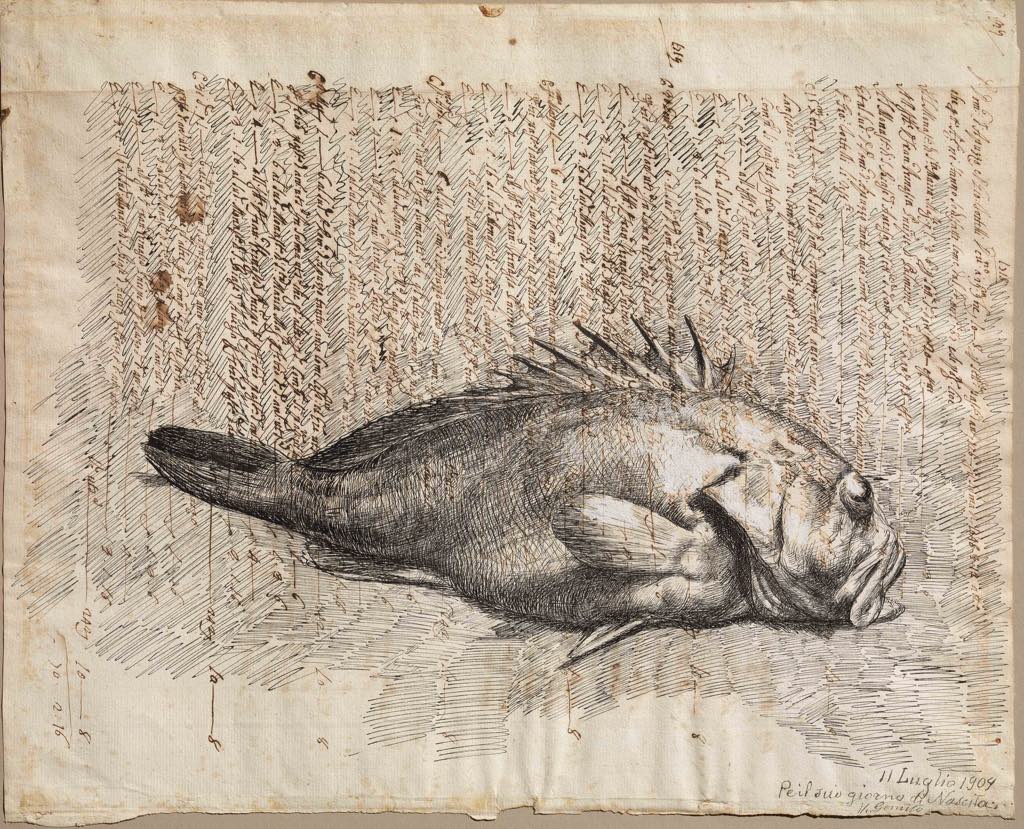
There are only a couple of weeks left to see an unusual and worthwhile show at Paris’s Petit Palais: “Vincenzo Gemito (1852-1929): Sculptor of the Neapolitan Soul” (through January 26).
Gemito, an important 19th-century artist who introduced realism to Italian art and whose work had been more or less forgotten in France (even though he lived in Paris for a time and was well-known here) until now, was abandoned as a baby on the steps of an orphanage in Naples by his family of poor woodcutters but had the luck to be quickly adopted. His talent must have been evident at a very early age, as he was apprenticed to a local artist before he turned 10.
This street urchin also took an early interest in the work of the city’s famous makers of terracotta nativity figures in the Via San Gregorio Armeno and practiced his art by creating sensitive portraits of other street urchins. A group of busts of children in clay in the exhibition is positively spellbinding, so lifelike are they.
He also haunted the galleries of the National Museum of Naples with his friends, among them Antonio MancinI, who became a well-known painter. Students at the Academy of Fine Arts in Naples, they even squatted an unused cloister and turned it into their studio.

Success came early for this prodigy: when he was only 17, his “The Player” (“Il Giacatore,” c. 1869; pictured at the top of this page), a masterly sculpture of a boy seated on the ground, his head bent over the deck of cards he holds, was exhibited and soon snapped up by the Royal House of Naples for the Capodimonte Palace, now the Museo di Capodimonte, to which the work still belongs and where this exhibition will be shown after it closes in Paris.

Depictions by other 19th-century sculptors like Jean-Baptiste Carpeaux and François Rude of a popular subject at the time, young Neapolitan fishermen, are shown to offer comparisons with Gemito’s work. The difference is that the French artists took their inspiration from Antique sculptures, while Gemito went straight to the source, which was shocking to many critics at the time. When his hyper-realistic “Neapolitan Fisherman” was shown in Paris in 1877, the bronze statue of of a boy crouched on a rock was criticized for its “ugliness” and described as looking like a “cretin” and a “monster.” It also had its defenders, however, and helped make Gemito famous in France.
The show continues with his series of bronze busts of celebrities of the day, among them Giuseppe Verdi and Mariano Fortuny, and a number of later works, including some drawings, like the scorpionfish shown above, that he made in spite of bouts of madness, but it is those clay busts alone, made in the abandoned convent when the artist was just a teenager, that alone make a visit to this exhibition well worth the price of admission.
Favorite
